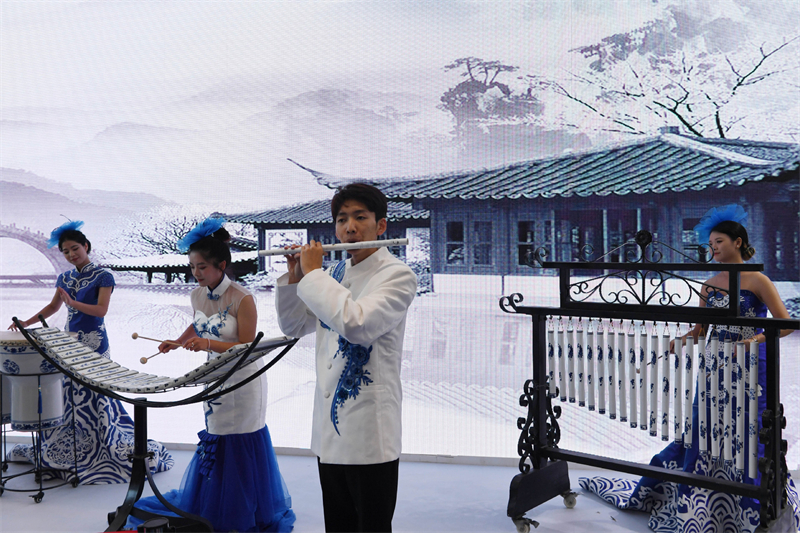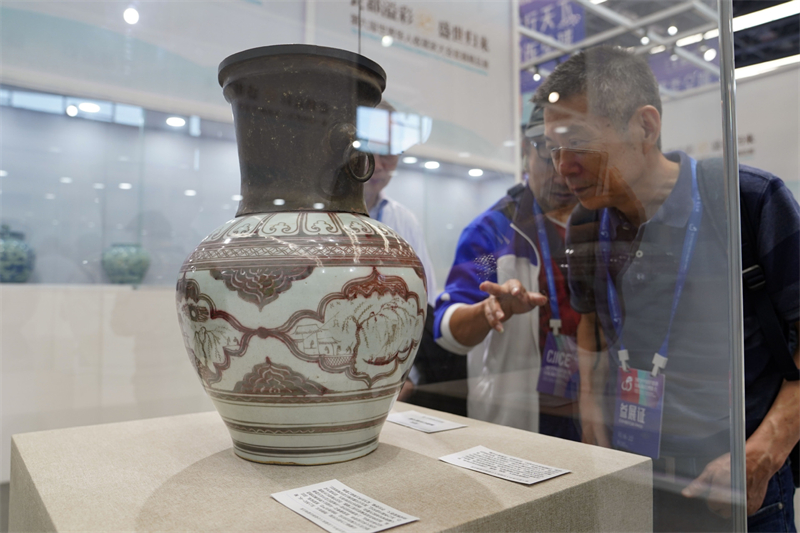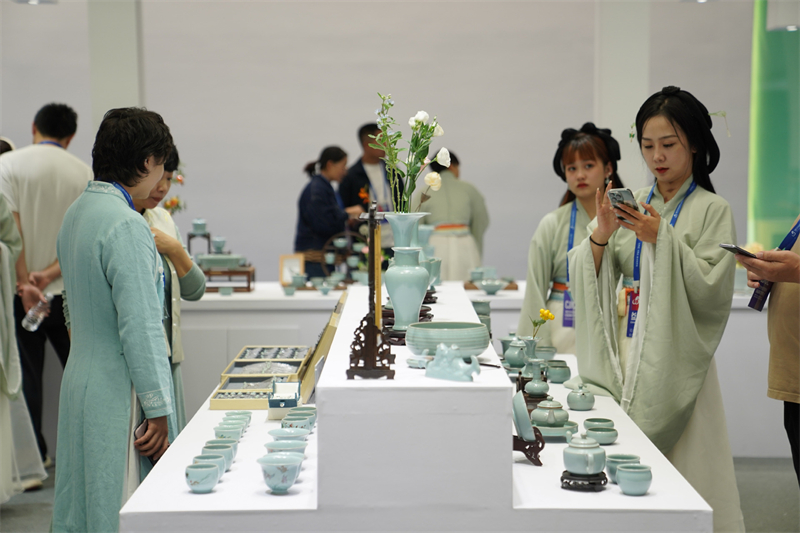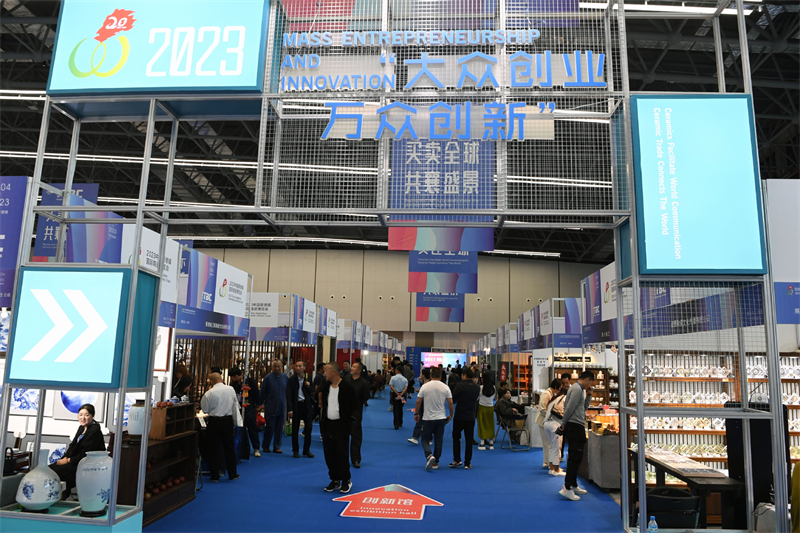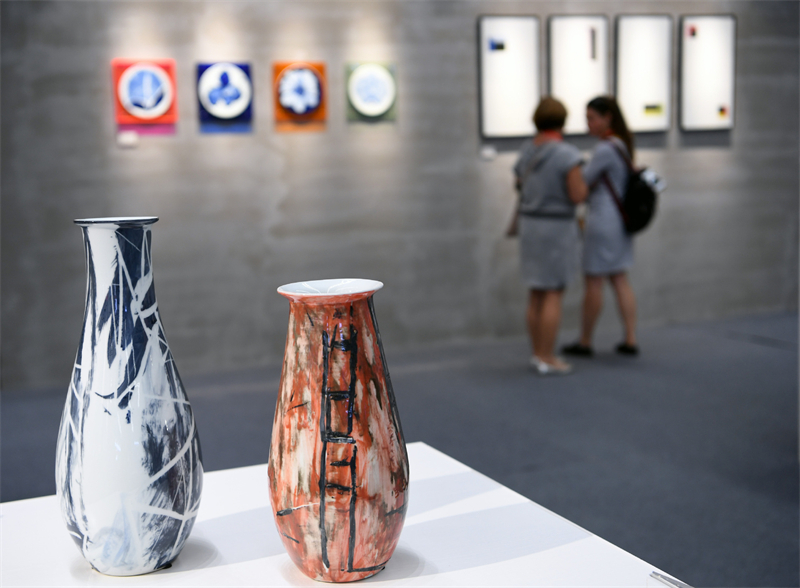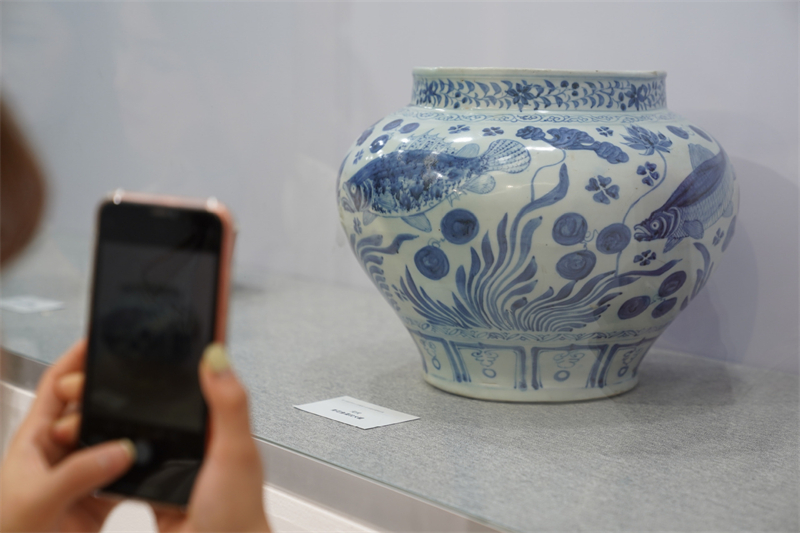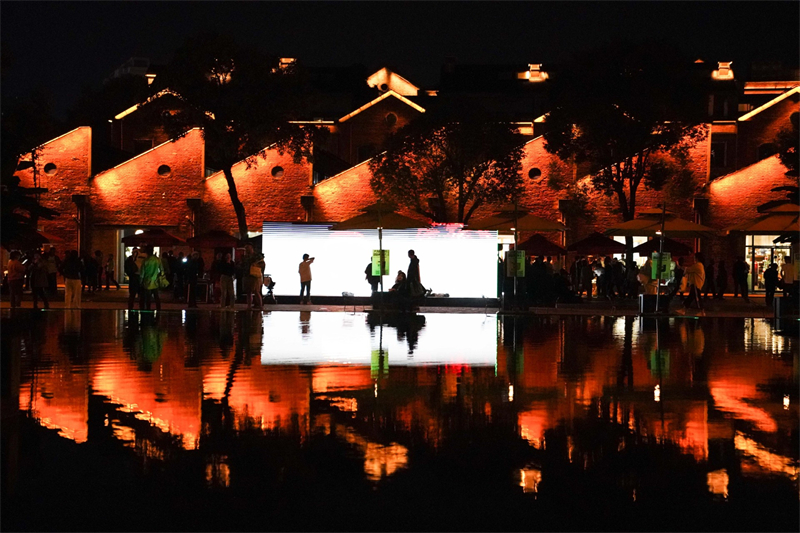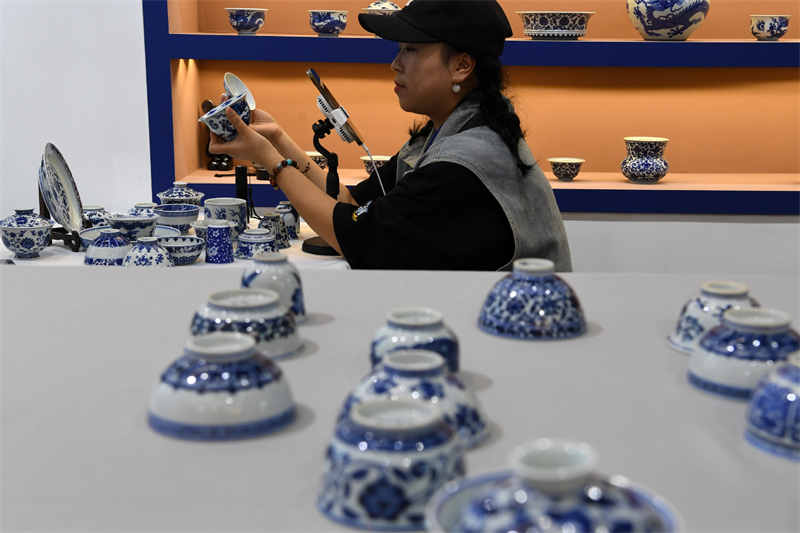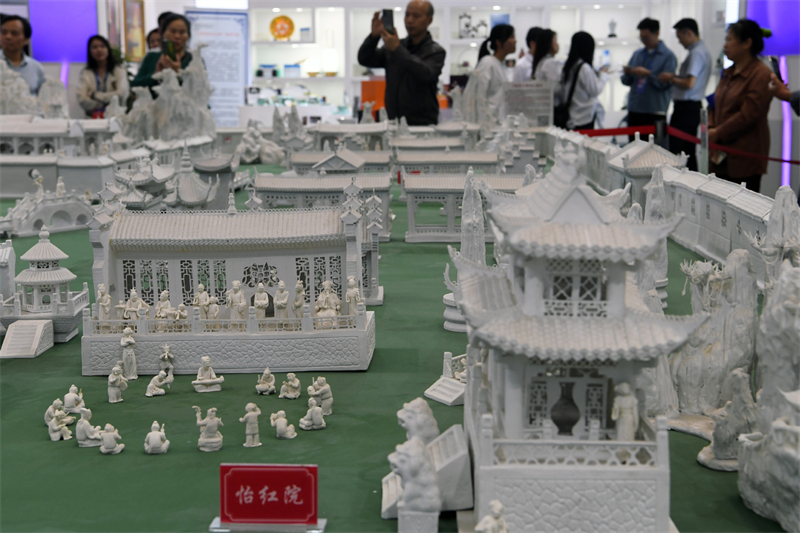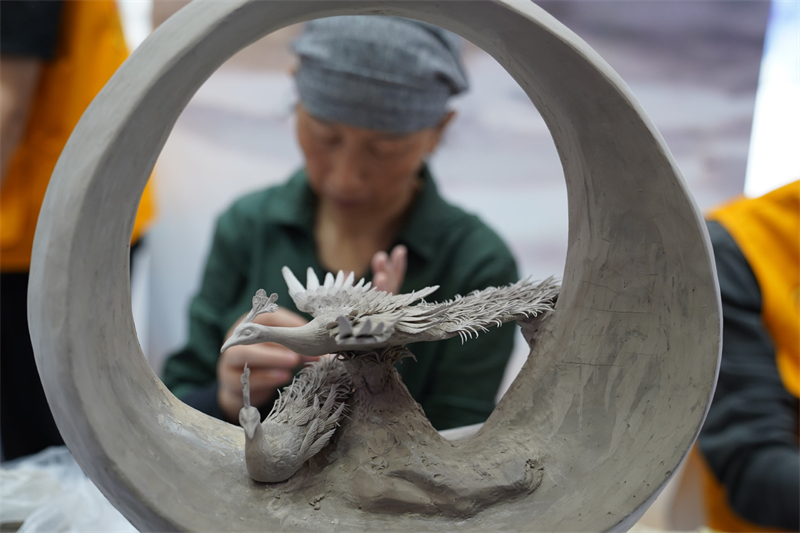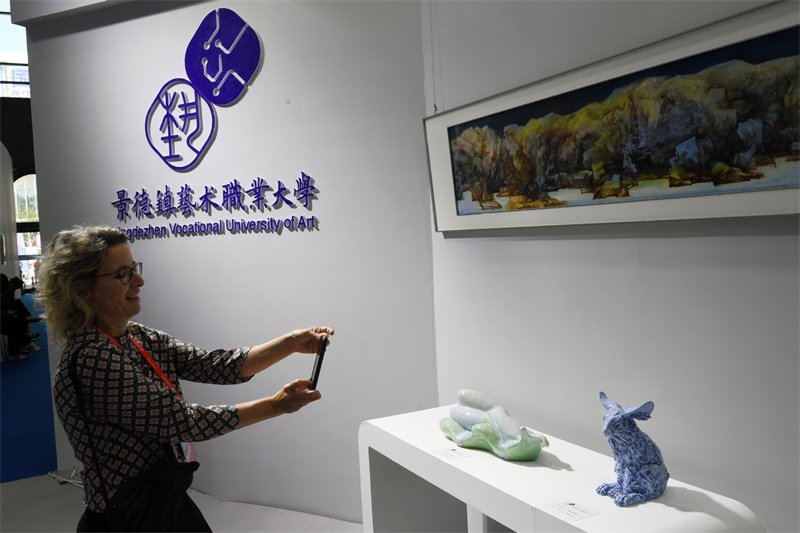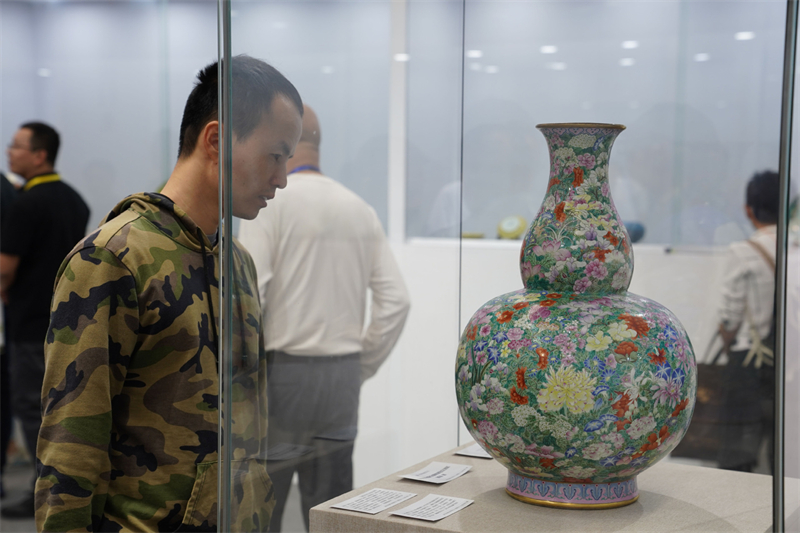
NANCHANG, Oct. 18 -- The 2023 China Jingdezhen International Ceramic Expo opened Wednesday in the city of Jingdezhen, a world-famous "porcelain capital" in east China's Jiangxi Province.
Themed "Ceramics Facilitate World Communication; Ceramics Trade Connects the World," this year's expo has a record exhibition area of 130,000 square meters.
Nearly 1,000 enterprises, including more than 360 from overseas, are attending the expo.
A cultural forum, an investment promotion meeting, and an international ceramics purchasing fair are also scheduled during the expo.
The event is co-hosted by the Ministry of Commerce, the China Council for the Promotion of International Trade, the China National Light Industry Council, and the provincial government of Jiangxi.
This year, the main venue was, for the first time, arranged in the Jingdezhen International Ceramic Expo City, also known as Taobo City. The first stage of the facility covers 640,000 square meters and includes a trading center, an international logistics center, and an international exhibition center. It opened for business on Tuesday.
More than 500 participating businesses located in the trading center will remain operational after the conclusion of the expo.
Booths with hi-tech elements have attracted numerous visitors.
Wearing a pair of VR glasses, Yang Jiaxing, a visitor from north China's Inner Mongolia Autonomous Region, was trying a ceramic restoration game.
"I have learned the whole process for porcelain restoration through this game, which is very engaging," said Yang, 19. "It's fresh and interesting."
Cao Ping, an employee of the developer of the game Artmuse, said applying VR and 3D modeling technologies, the company has developed a series of games related to ceramics and also created a virtual ceramic exhibition hall, displaying 20 potteries from home and abroad.
"Offline exhibitions usually shield the potteries for protection, and the VR technology has enabled visitors to reach them and enjoy them at any angle," she said.
Zhang Feng has brought a pottery 3D printer for exhibition. The marketing manager from a local technology company said 3D printing breaks the shaping limit of traditional handmade pottery techniques and reduces labor costs for making porcelains.
The machines have been used by industrial companies for mass production and by artists to instantly visualize their designs, Zhang added.
First held in 2004, the expo, formerly the China Jingdezhen International Ceramic Fair, has become a significant platform to showcase the world's finest porcelain.
Over the past 20 years, the event has drawn 2,500 overseas enterprises from 49 countries and regions, according to the organizers.
